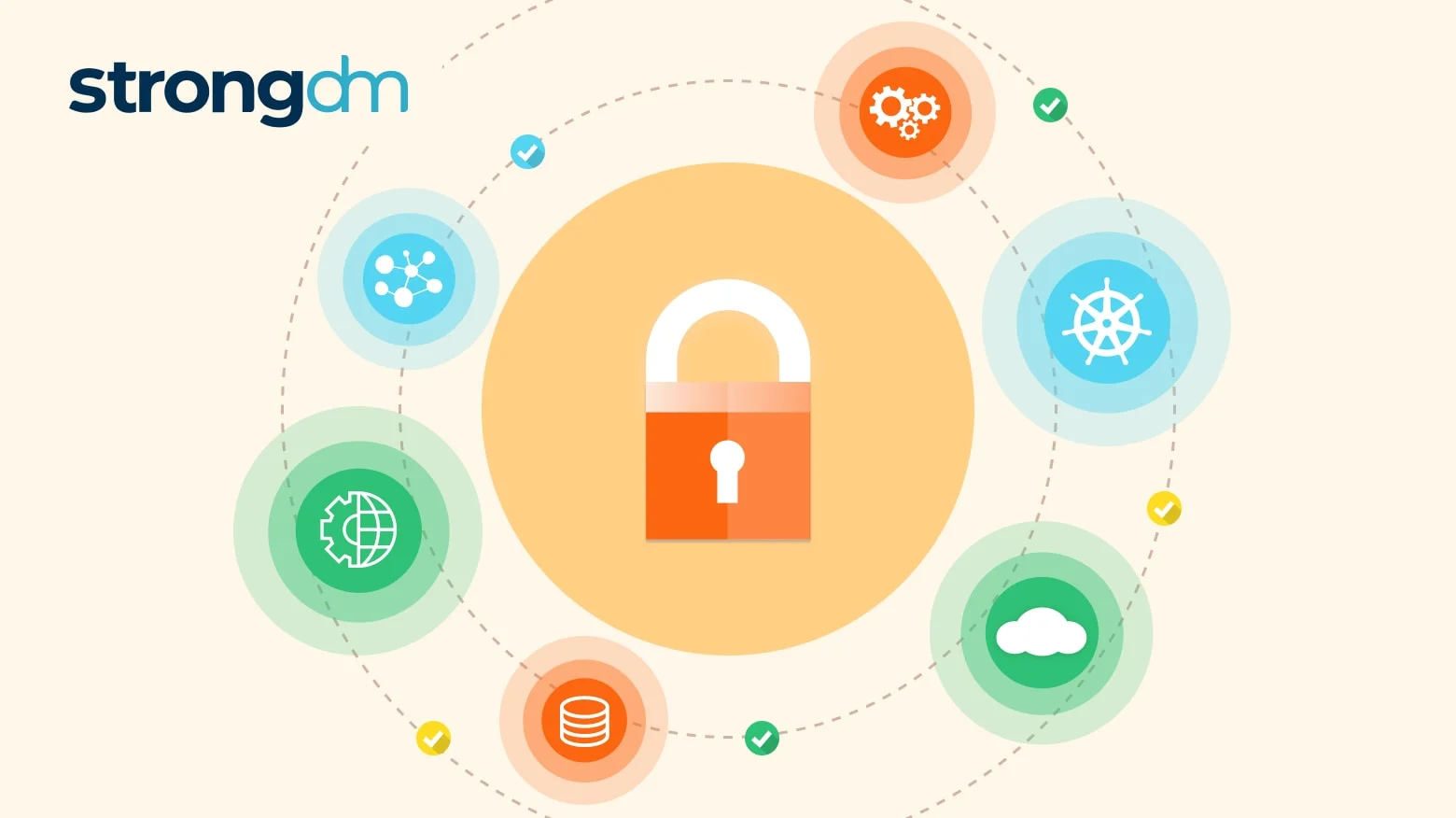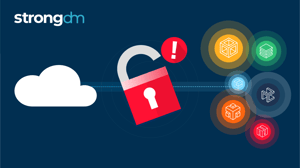Service Accounts: Definition, Best Practices, Security, and More


Written by
John MartinezLast updated on:
June 25, 2025Reading time:
Contents
Built for Security. Loved by Devs.
- Free Trial — No Credit Card Needed
- Full Access to All Features
- Trusted by the Fortune 100, early startups, and everyone in between
Summary: Is your organization overwhelmed by rampant service account sprawl? Rest assured, you can regain control. Modern Privileged Account Management (PAM) tools and practices empower you to overcome the challenges of unchecked service accounts. The information in this article will help you understand the meaning of service accounts, so you can manage your organization’s service accounts more effectively and mitigate their risks. Robust security is attainable for all your privileged accounts.
What Is a Service Account?
A service account is a non-human privileged account that an operating system uses to run applications, automated services, virtual machine instances, and various background processes.
Here’s another way to think about service accounts.
Just like human users, computers also need access to networks, applications, databases, files, and other resources. A service account provides a way to assign an identity and permissions to a computer program or process that performs a specialized task. Service accounts have privileges that allow extensive access to system resources, either locally or across a domain.
Service account vs. user account
A service account provides an identity for a system service. In contrast, a user account identifies a person. Standard user accounts typically have human names like “John Smith,” whereas service accounts have descriptive names like “NetworkService” or sometimes no name at all. This makes it easier to separate the various services that run on machines from the people who use them.
Another significant difference between these two types of accounts is that user accounts must be created. Although service accounts can be created manually, they often come pre-installed and pre-configured as part of an operating system or another software program.
Importance of Service Accounts
So what are service accounts used for, exactly?
Service accounts support business-critical programs and processes. They are especially useful for running persistent programs that need to operate continuously. Websites and databases are examples of persistent programs that employ service accounts.
A service account can also serve as a proxy that performs tasks on behalf of a user. In this role, the service account protects sensitive data and system resources from users who lack direct access.
A service account provides a powerful means of access, not just because it carries high-level privileges but also because the account’s credentials must be widely known. The primary application and all the programs that the application interacts with must be able to identify and verify the service account’s credentials. These unique qualities make service accounts prime targets for hackers.
Service Account Examples
Service accounts have different names, functions, and privileges, depending on where their related programs and processes run. Below are examples of various types of service accounts found in popular computing environments.
| Environment | Service Account Function | Common Service Account Names |
| UNIX and Linux | Runs an application |
|
| Windows | Provides security context for various Windows Server services, determining how much access each service may have to local and network resources |
|
| Cloud | Manages permissions for virtual machines to ensure safe connections to APIs and various cloud services |
|
Service Account Security Challenges
Service accounts can pose more risk than other privileged accounts because they enable bad actors to hide in plain sight and operate under the cloak of a valid program. Many such programs run continuously, giving attackers persistent access. Cybercriminals who hack a service account can elevate privileges to gain even more access. Adopting a phantom identity allows them to roam freely through corporate IT networks and cloud environments without arousing suspicions.
57% of IT professionals do very little or no privileged account monitoring.
Service accounts are inherently challenging to manage. Unlike a user account that’s associated with a person, a service account has no human owner and, therefore, no real accountability.
Are service accounts starting to sound like a minefield? Wait, it gets even worse.
Less than 40% of organizations use MFA to secure their privileged accounts.
Sloppy record-keeping and poor password hygiene make it hard to track service accounts and keep them secure, leaving organizations vulnerable to attackers who could exploit corporate networks or compromise sensitive data using stolen credentials. If left unchecked, service account security challenges like these can lead to crippling business consequences.
20% of organizations never change default vendor passwords for privileged accounts—and one in three allows privileged account password sharing.
How service accounts fly under the radar
Here are some common reasons why service account issues go undetected and unaddressed:
- Employee turnover—The person in charge of overseeing the account left their role and neglected to communicate service account details to their successor.
- Forgotten temporary accounts—Sometimes a temporary service account gets created for a specific purpose, such as installation. It’s easy to forget to remove these accounts when the task is complete.
- Orphaned legacy accounts—Service accounts often continue to exist long after an organization replaces an old system.
- Reused credentials—DevOps engineers routinely isolate software in containers. A container can be associated with a service account that has hard-coded or reused credentials.
- Cloud housekeeping issues—The scalable nature of cloud environments allows microservices and containers to be spun up on demand. This creates temporary service accounts that aren’t always cleaned up when these resources are spun down.
- Sheer volume—Organizations commonly have thousands of service accounts, making the job of managing them all extremely challenging. Plus, multiple programs or modules can reference the same service account, which adds even more complexity to the task.
More than half of IT security professionals still rely on manual methods for managing privileged accounts, with 18% keeping records on paper and 36% using spreadsheets.
Service Account Management Best Practices
Companies that don’t know how to manage service accounts properly take a chaotic approach, unwittingly exposing themselves to unnecessary risk in the process. With all the challenges these accounts present, securing service accounts can seem like an impossible task.
But here’s the good news:
Organizations can gain tight control of privileged access by implementing service account governance and adopting modern tools that enable continuous monitoring and automation.
What’s the best way to get started?
Below are five service account best practices that can help IT professionals achieve robust security:
1. Define and classify service accounts. Create different categories for service accounts, depending on risk and how critical each category is to business operations. Identify which service accounts are most important, so the highest priority accounts can be recovered first if a security incident occurs. A well-defined taxonomy will help reduce downtime and minimize business disruption during disaster recovery.
2. Take inventory. Use a Privileged Access Management (PAM) solution to scan the entire IT environment and automatically discover all existing service accounts. Be sure to remove any unnecessary accounts it finds. That way, bad actors won’t be able to exploit the unused accounts. The software will perform continuous monitoring to detect and flag any suspicious service accounts that might crop up over time.
Only 30% of enterprises discover all their privileged accounts—and 40% don’t even bother looking for them.
3. Establish governance. Create policies for provisioning new service accounts and for de-provisioning them when they’re no longer needed. PAM tools help IT teams enforce policies, review usage, and establish workflows for tighter control. Delegate service account ownership to select employees. Hold the responsible parties accountable for securing credentials and keeping track of where and how service accounts are used.
4. Secure access. Ensure secure access by using an automated PAM tool that stores sensitive credentials in a central location. Leverage the Principle of Least Privilege (PoLP) to limit the permissions each service account may have, allowing the minimum amount of access needed. Be sure to implement strong service account password management policies and have IT admins change or rotate passwords regularly.
5. Monitor and audit activity. Use a PAM solution to simplify monitoring and auditing. Modern tools track account usage continuously and display alerts when they detect abnormal behavior. Besides offering intelligent insights, PAM tools provide deep, real-time visibility. With access to comprehensive capabilities like these, IT team teams can identify and respond to suspicious activity quickly, mitigating the risk of threats.One-third of IT professionals wait for a security incident to occur before changing a service account password.
Simplify Managing and Securing Service Accounts with StrongDM
IT administrators and DevOps teams constantly struggle to find a balance between productivity and security when using and managing service accounts. Overworked teams that need to get tasks done quickly often rely on outdated manual processes that don’t scale. Plus, habits like creating service accounts on the fly and forgetting to change passwords create chaos and service account sprawl, leaving IT environments vulnerable to attack. In the end, nobody wins.
Fortunately, there’s a solution: StrongDM.
With StrongDM, you can provision and deprovision privileged service accounts with just one click. Automated monitoring and alerts make it easy to track account usage and behavior. If an attacker tries to exploit a service account, StrongDM will detect their activity well before they can compromise your system or access sensitive data. Plus, you’ll have deep visibility across your entire tech stack so your IT team can keep a close eye on everything in real-time.
Ready to leave the Wild West in the dust and explore a new frontier where all your service accounts can be secure and easy to manage? Saddle up and book a free demo of StrongDM today.
Next Steps
StrongDM unifies access management across databases, servers, clusters, and more—for IT, security, and DevOps teams.
- Learn how StrongDM works
- Book a personalized demo
- Start your free StrongDM trial

Categories:

About the Author
John Martinez, Technical Evangelist, has had a long 30+ year career in systems engineering and architecture, but has spent the last 13+ years working on the Cloud, and specifically, Cloud Security. He's currently the Technical Evangelist at StrongDM, taking the message of Zero Trust Privileged Access Management (PAM) to the world. As a practitioner, he architected and created cloud automation, DevOps, and security and compliance solutions at Netflix and Adobe. He worked closely with customers at Evident.io, where he was telling the world about how cloud security should be done at conferences, meetups and customer sessions. Before coming to StrongDM, he lead an innovations and solutions team at Palo Alto Networks, working across many of the company's security products.
You May Also Like




